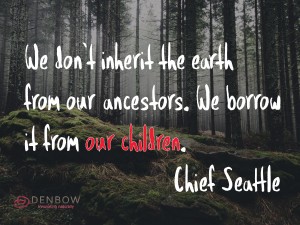Single Most Important Aspect Of Soil – Ask Tom series
An interview with Tom on soil
We decided to ask Tom the question, “What the single most important aspect of soil?”
We were surprised by his response.
Denbow: Ok Tom, what is the single most important aspect of soil?
Tom: Ah that’s a simple question!
Denbow: Really? Tell us more.
Tom: Of course. Now my first response was a little tongue-in-cheek. You see, there isn’t a single most important aspect of soil. Soil is so much more dynamic than most people understand. As I will hopefully help illuminate in this series, soil has multiple components, which can be engineered to best support what needs to grow. These components are sand, silt, and clay, together with organic matter. The proportions may vary, as does the PH level. So, in fact, your question is not simple at all. A better question might be “What is the best soil composition to support what needs to grow?”
The soil is the grow medium for what needs to grow. When sourcing soil for your project, it is important to ask the right questions. In what geographic region is the soil being used? What kinds of natural environments surround the soil? What are you planting in the soil? What is the slope of the land? There are literally hundreds of questions you could ask when considering what type of soil to use on your specific project.
I could also argue that the single most important aspect of soil is having standardized soil regulations that govern soil usage.
It’s ironic that when constructing a building there are stringent rules regarding the building code, yet when it comes external landscape components of the building, there are mixed standards and styles. However, when you consider the impact of the landscape and the potential the external part of the building has on the environment, as well as any surrounding water sources, you start to see that the exterior of a building is just as important the interior.
Soil manufacturers are not equal and soils are not equal. Many different components like yard waste, compost, and, in some situations even bio-waste, can potentially contain metallic elements in the soil. This is why we need to educate the public as well as lobby for more consistent and informative guidelines for the uses of soil.
So, in constructing a building you have some clear guidelines. Attempting to create similar standards for soil has been challenging to say the least. Over the last 20 years it’s been difficult because we haven’t passed along the right information.
I can explain this way, Tom says. Soil in British Columbia and the regulations of soils in British Columbia has been like a telephone game (you know, the game you played as a kid). One person starts the conversation, whispering in the next person’s ear. “Soil needs to have these three components,” they say. The next person passes it on: “There are three things we should discuss when it comes to soil”. The next person says, “There are three important ways to install soil”. This continues until the last person says, “Soil is great for growing.” Yes, this is true but it has very little—if any—of the information that is actually useful for soil regulations.
Conversations managed this way can get lost in translation. And that’s what’s happening with BC soil. We have several people trying to establish rules regarding the soil views in different cities and municipalities around the lower mainland of BC. Although these rules are somewhat informative, they also need to be consistent and useful, and therefore easily followed.
So, to sum it all up (and sorry for the tangent at the end!), there is no single aspect of soil that is most important. Soil is a dynamic grow medium that needs to be properly engineered to meet the requirements of each specific project. From there we need to have a governing body helping define and classify the different soils we use so the project manager, landscape architect or informed home owner can make the right soil decision.


